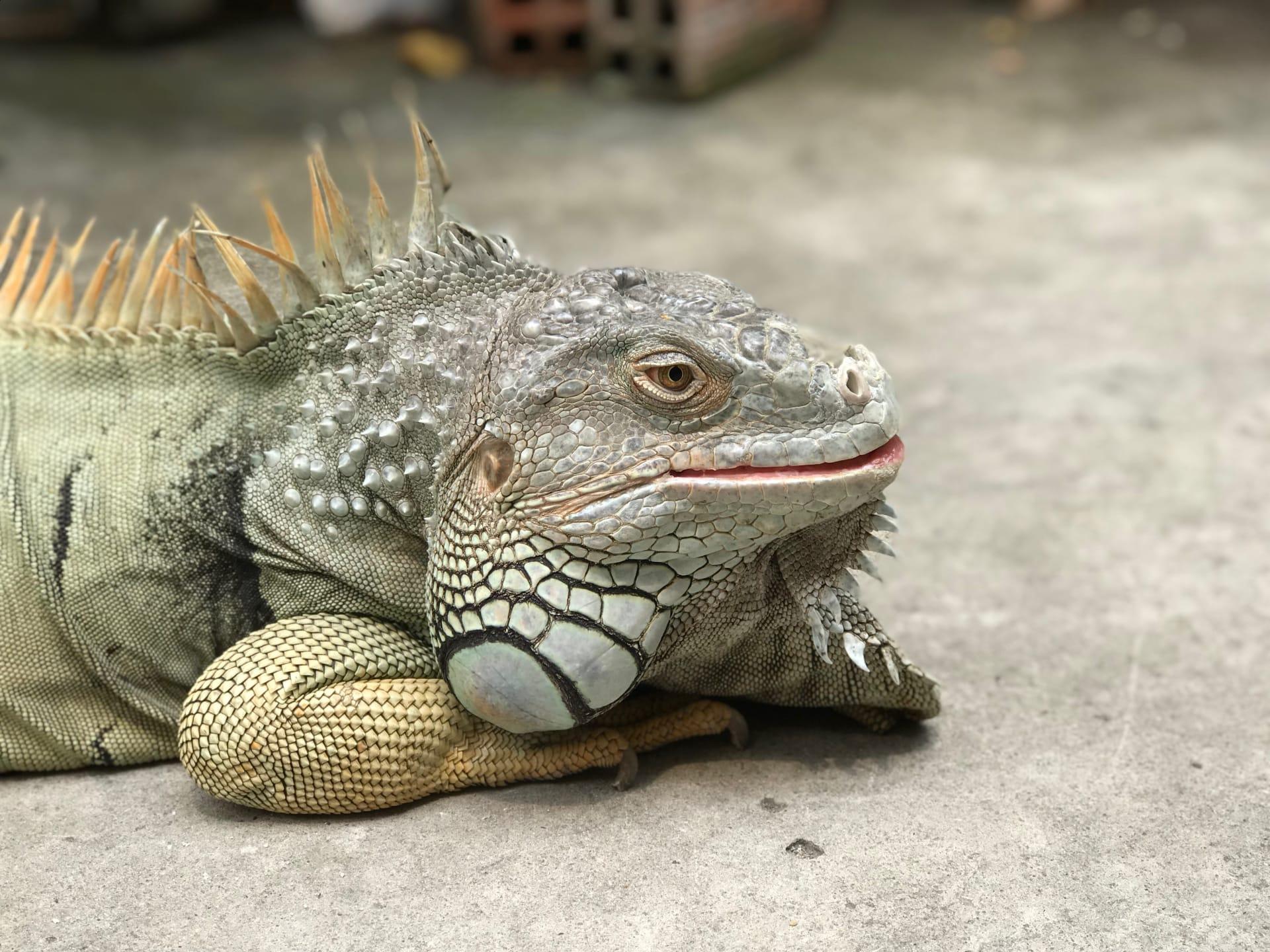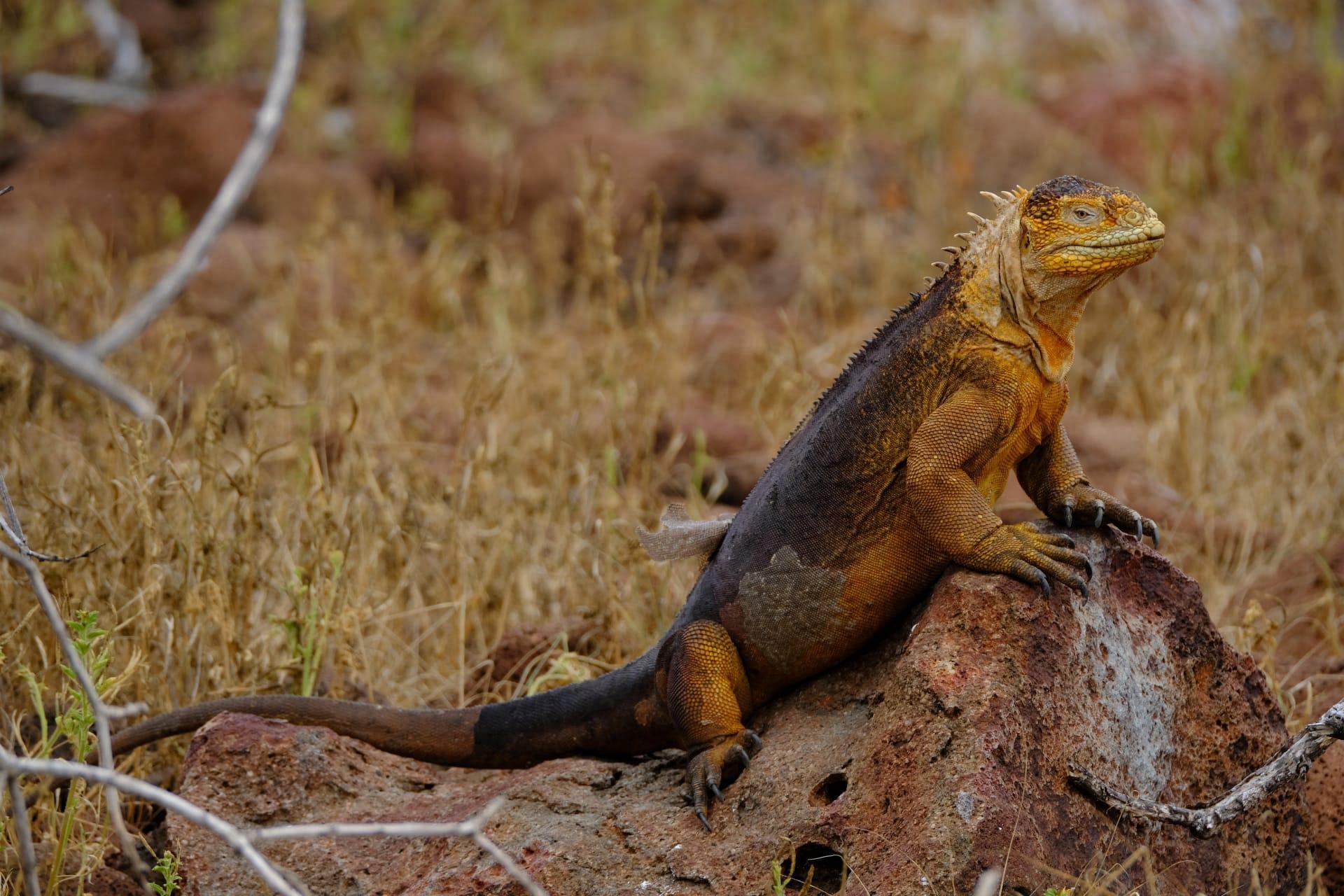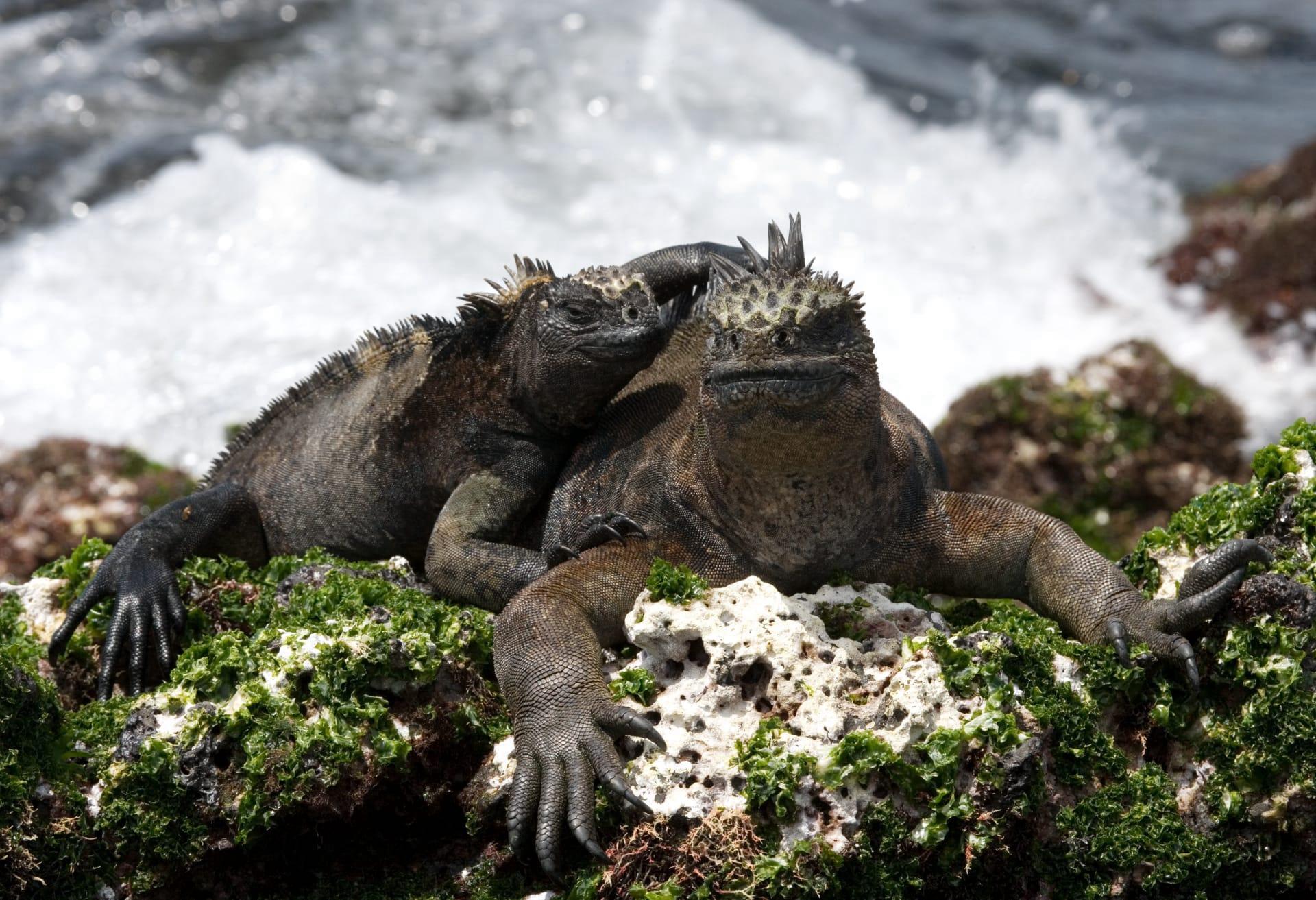Marine Iguana
- Home /
- Mini Encyclopedia /
- Animal /
- Marine Iguana
1
The Marine Iguana, scientifically known as Amblyrhynchus cristatus, is a unique species belonging to the Iguanidae family. These fascinating reptiles are the only known marine lizard species, exhibiting a set of distinct characteristics that differentiate them from their terrestrial relatives. Their taxonomic classification places them in the order Squamata, which includes snakes and lizards, and they are a part of the suborder Iguania, notable for species like chameleons and iguanas.
Marine Iguanas are endemic to the Galápagos Islands, a volcanic archipelago in the Pacific Ocean. These islands, part of Ecuador, provide the perfect habitat for these iguanas, offering rocky shores and abundant marine algae, their primary food source. Each island within the archipelago has its own distinct population of Marine Iguanas, varying in size, color, and behavior. This distribution is a striking example of adaptive radiation, where a single species evolves into multiple forms to adapt to different environmental conditions.

2
Question: Do Marine Iguanas swim long distances in the ocean?
Answer: Contrary to what some might think, Marine Iguanas are not long-distance swimmers. These iguanas are highly adapted to their coastal habitats and spend most of their time basking on the rocky shores. Their foraging strategy involves swimming in the shallow waters near the coast to graze on algae, but they rarely venture far from the shore. Marine Iguanas are excellent divers and can dive up to 30 meters deep, but their trips are generally short, lasting only about 10 minutes. This behavior reflects their adaptation to a life spent predominantly on land with only brief forays into the ocean for food.

3
Marine Iguanas have developed several fascinating survival strategies to thrive in their unique environment. One of their most notable adaptations is their ability to feed on marine algae. These iguanas are excellent swimmers, using their flattened tails to propel through water, and they have sharp claws to cling onto rocks in the ocean. This diet is unique among modern lizards and requires them to be able to hold their breath while foraging underwater.
Another critical survival strategy is their salt-excreting glands. Since Marine Iguanas consume a lot of saltwater while feeding on algae, they have specialized nasal glands that help them expel excess salt. You can often see them sneezing out salt crystals, a unique and somewhat amusing sight. Additionally, these iguanas are capable of shrinking their bodies during food scarcity. This remarkable adaptation allows them to survive longer periods without food, particularly during El Niño events when their food supply diminishes.

4
In the Galápagos ecosystem, Marine Iguanas play a vital role. They are a key species in maintaining the balance of marine and terrestrial ecosystems. Their feeding habits help in controlling the growth of algae, which is crucial for the health of coral reefs. By grazing on the algae, they prevent it from overgrowing and smothering the corals, thus maintaining a healthy ecosystem for a variety of marine life.
Furthermore, Marine Iguanas are an integral part of the food chain in the Galápagos. They are preyed upon by various native and introduced predators, including hawks, herons, and feral cats and dogs. This predation plays a significant role in controlling their population sizes and maintaining ecological balance. Additionally, their nesting sites contribute to the terrestrial ecosystem by providing nutrient-rich materials to the soil, aiding in plant growth and maintaining the health of the land habitats.

5
Film: "Galápagos: The Islands That Changed the World" is a notable documentary produced by the BBC in 2006. This series offers an in-depth look at the diverse wildlife of the Galápagos Islands, including the unique Marine Iguanas. It explores their extraordinary adaptations and the role they play in the delicate ecosystem of the islands.
Book: "The Galápagos: Exploring Darwin's Tapestry" by John Hess is an insightful book published in the United States in 2009. Hess, through his narrative, delves into the rich biodiversity of the Galápagos Islands, dedicating a section to the fascinating life of the Marine Iguana. He combines scientific information with vivid descriptions, making it an engaging read for nature enthusiasts.
Book: "Lizards in an Evolutionary Tree: Ecology and Adaptive Radiation of Anoles" by Jonathan B. Losos, published in the United States in 2009, provides a broader look at lizard evolution. While it focuses on the Anole lizards, it offers valuable insights into adaptive radiation, a concept crucial to understanding the Marine Iguana's evolution and adaptations in the Galápagos Islands.